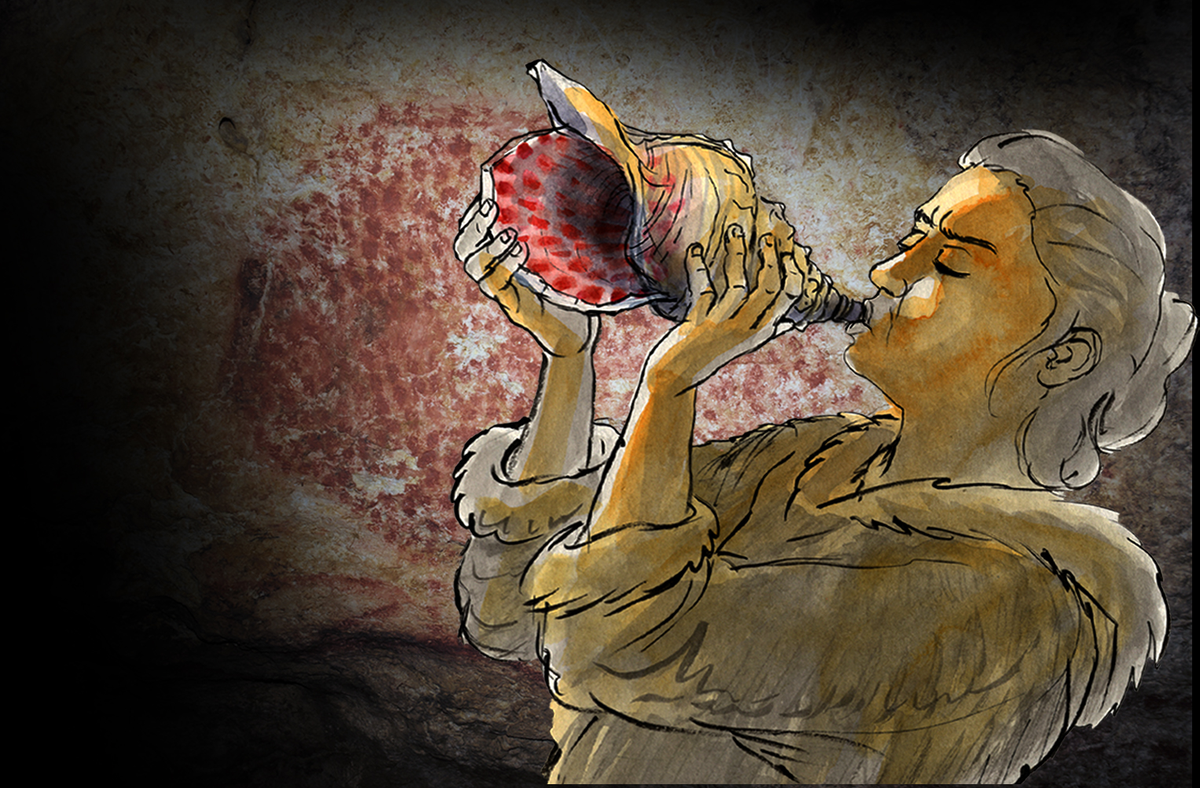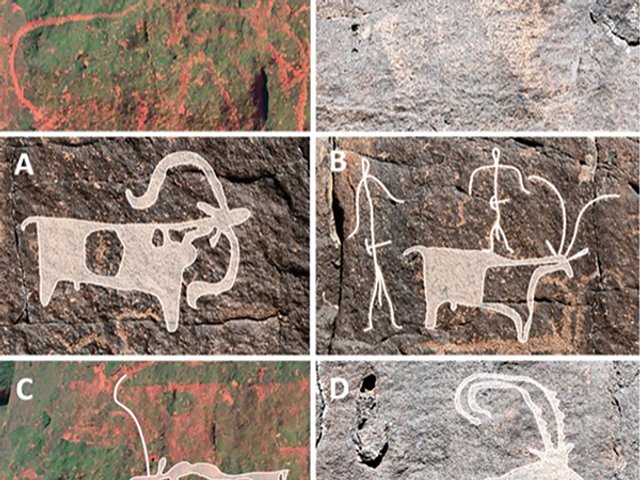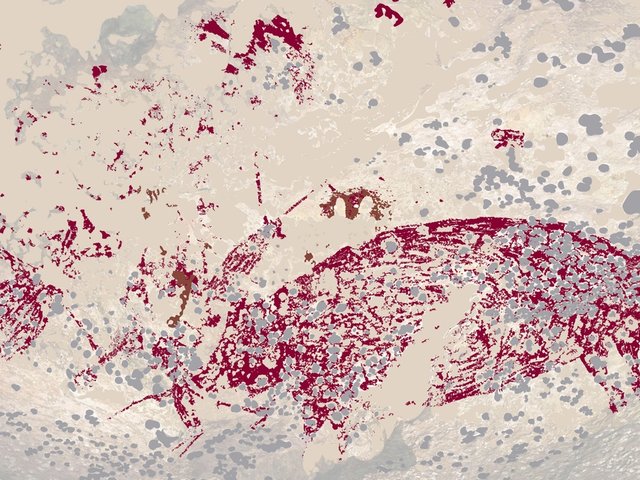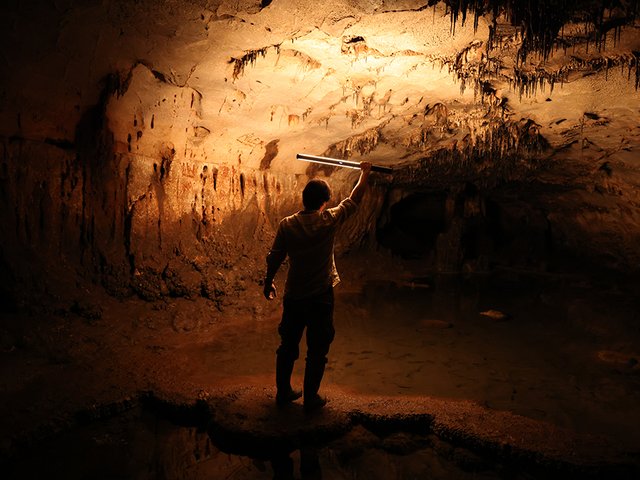Researchers have identified the earliest known conch shell horn adapted by humans and have heard it played for the first time in 18,000 years, according to a new study published in the open-access journal Science Advances. Discovered in Marsoulas Cave, France, where the walls are rich in rock art, the conch horn provides a rare insight into the sounds that once reverberated around this sacred space, and probably held an important social or ritual meaning to the local Upper Palaeolithic population.
When archaeologists first uncovered it in 1931, the conch was described as an “exceptional discovery” but was regarded as a cup. Now, using photogrammetry and CT-scans to study the conch’s surface and internal structure, researchers have shown that it was modified to produce sounds. The shell’s natural curving lip, around its opening, was removed by force, as was its hard conical tip to create an extra opening. The shell was perforated below this new opening so that a tube, perhaps of bird bone, could be inserted to support a mouthpiece. When played by a musicologist, the conch produced the notes C, C-sharp and D.
“It is fantastic to have these notes produced by this very old musical instrument,” says Philippe Walter, the director of the laboratory of molecular and structural archaeology (CNRS-Sorbonne), France. “We must now continue this work with a 3D printed model or with virtual models, and we hope in the near future to be able to create a virtual musical instrument that would let any musician discover the sensations allowed by the seashell horn from Marsoulas.”
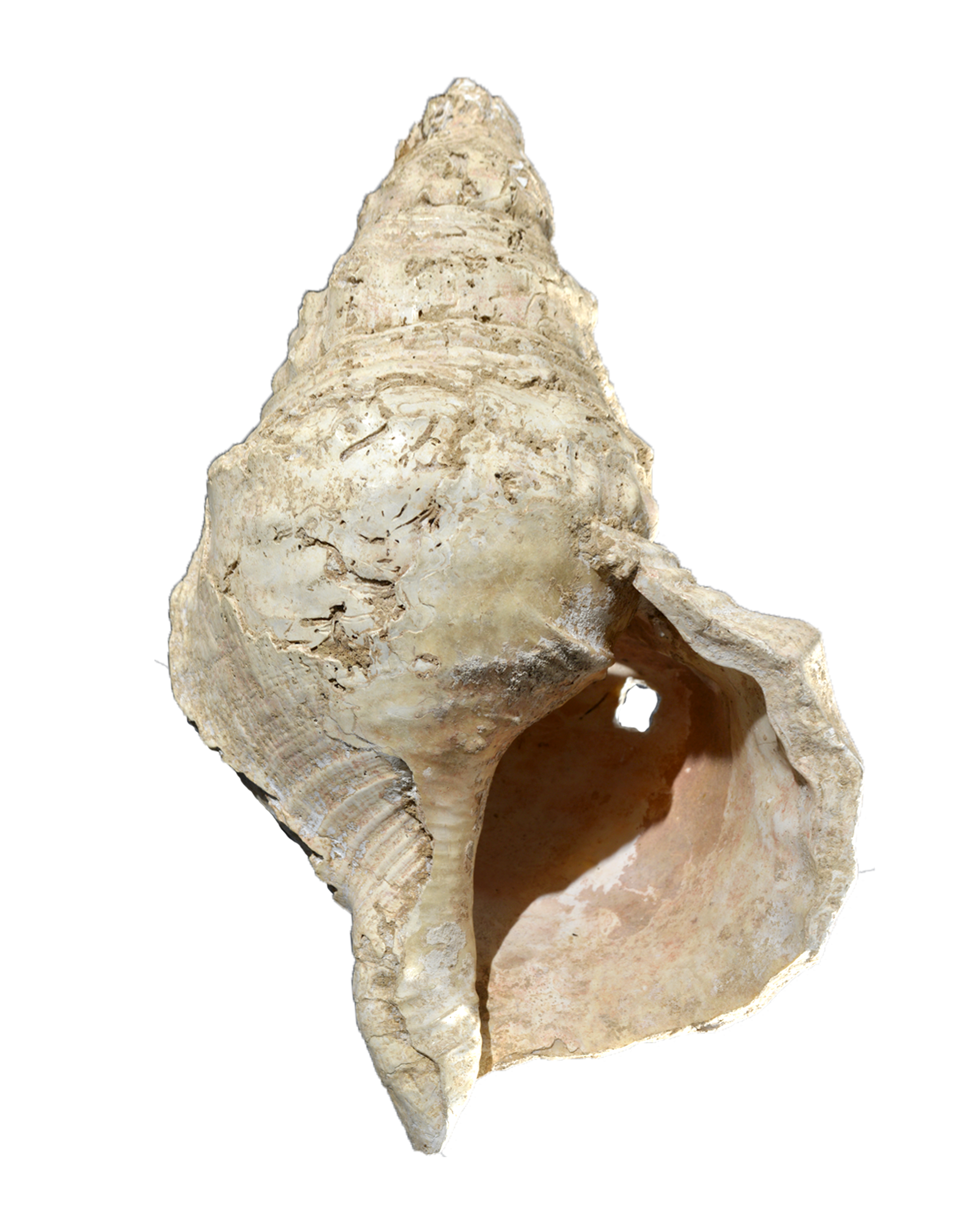
At 31 cm in height, 18 cm in diameter (at the widest point) and up to 0.8 cm thick, this conch shell is larger and thicker than more recent ones, suggesting colder sea temperatures © Carole Fritz et al. 2021
Red dots, the size and shape of fingerprints, were also identified on the shell. These dots are similar to paintings on the Marsoulas cave walls, where red dots left by the fingers of prehistoric artists form the shape of a bison and geometric patterns. The team noted engravings beneath some of the conch’s red dots too. “The [shell’s] pigment was analyzed and its chemical composition is very similar to one of the wall paintings,” Walter says. “It is very important because it shows an objective link between the seashell horn and the painted artworks and undoubtedly, a very strong symbolic relation.”
Due to its size, the shell was probably brought to the cave from the cold waters of the Atlantic coast, over 200km to the west, where sea snails grew large. It is one of only a few instruments to have survived from the Upper Palaeolithic Period (around 40,000-11,500 years ago), such as flutes, whistles and bullroarers (an instrument spun on string to make sound). But as these items were formed from bone, the conch is currently unique.


